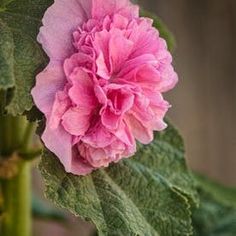How to Grow Hollyhocks

Hollyhocks (Alcea rosea) are a favorite among gardeners for their tall, colorful spikes of flowers that add beautiful vertical accents to any garden. These easy-to-grow cottage garden plants offer a stunning display in various shades of red, pink, white, yellow, and purple throughout the summer months. If you’re considering adding hollyhocks to your garden, follow this simple step-by-step guide to ensure successful growth and thriving plants.
1. Choosing the location:
Hollyhocks prefer full sun or partial shade and well-drained soil. Choose a spot in your garden that receives at least 6 hours of sunlight each day and has good drainage. These plants can grow up to 8 feet tall, so make sure they have enough space to reach their full potential without overcrowding.
2. Preparing the soil:
Before planting, prepare the soil by working it well with a shovel or garden fork. Amend the soil with compost and aged manure for additional nutrients. Ideally, hollyhocks thrive in soil with a pH between 6.0 and 8.0. You can also add lime if your soil is acidic.
3. Sowing seeds or planting seedlings:
You can start hollyhocks from seeds or purchase seedlings from a nursery. Sow seeds directly outdoors in early spring or late fall for blooms the following year. Place seeds on top of the prepared soil about 2-3 inches apart and gently press them into the surface without burying them completely.
If using seedlings, transplant them outdoors after all danger of frost has passed. Space them approximately 18 inches apart to allow for proper growth and air circulation.
4. Watering:
Hollyhocks require moderate watering to establish roots during the first few weeks after planting. However, once established, they are quite drought tolerant. Water consistently but avoid overwatering to prevent root rot.
5. Fertilizing:
Hollyhocks benefit from a light application of balanced slow-release granular fertilizer in the early spring. Too much fertilizer may lead to excessive foliage growth, so it’s essential not to overdo it.
6. Supporting the stems:
As hollyhocks grow taller, they might require support to prevent them from toppling over due to strong winds or heavy blossoms. Use garden stakes and soft ties for additional support and stability.
7. Pests and diseases:
Hollyhocks can be prone to rust disease, which appears as rusty-orange spots on the leaves’ undersides. Remove infected leaves immediately and treat with fungicides if necessary. To ward off pests such as Japanese beetles, use insecticidal soap or neem oil.
8. Deadheading:
Regularly remove spent flowers from the plants during the blooming season to encourage continuous bloom and discourage seed production.
9. Collecting seeds:
If you’d like to save seeds for future planting, wait for the seedpods to mature fully and turn brown before collecting them. Store seeds in a cool, dry place until you’re ready to sow them again.
By following these simple steps, growing hollyhocks can be an enjoyable addition to your garden landscape. With their tall, vibrant blooms and low-maintenance care requirements, they are sure to become a favorite among both experienced and beginner gardeners alike.






